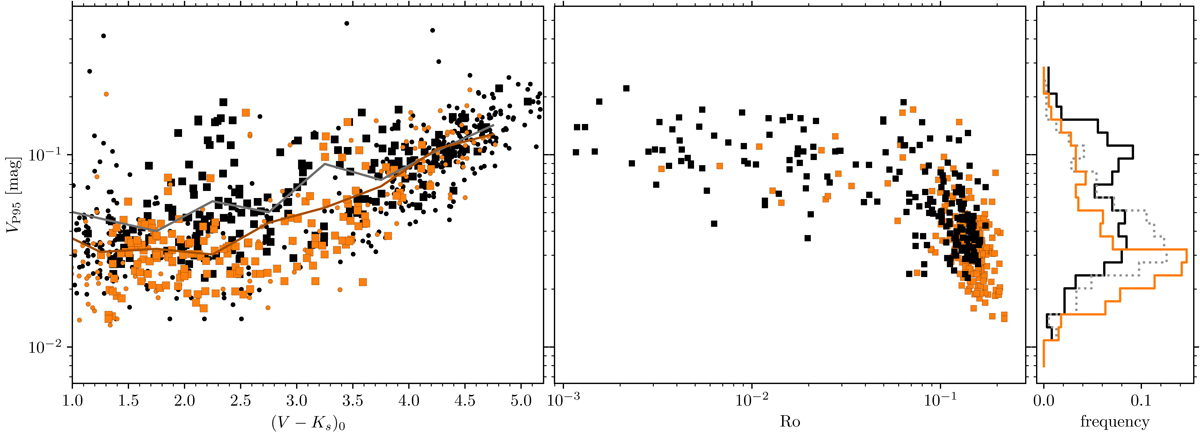Fig. 3.

Download original image
Left: V band variability amplitude (VP95) for stars in NGC 3532 (orange), compared with those of the zero-age main sequence open cluster NGC 2516 (black) for both stars with periods (squares) and those without (circles). Stars in NGC 3532 generally have lower variability, as seen by the mean amplitudes expressed by the solid lines. Centre: VP90 against Rossby number Ro for the rotators in NGC 3532 and NGC 2516. The distribution can be seen to resemble the activity-rotation relation previously known from chromospheric and coronal activity, and it shows that the photospheric activity amplitude has a similar structure. Right: histogram of the variability amplitudes for the members of the two open clusters, showing that the high-amplitude stars of NGC 3532 are far less numerous in comparison with those of NGC 2516. The dotted grey histogram is restricted to NGC 2516 stars with (V − Ks)0 < 4 and confirms that the high-amplitude peak in NGC 2516 is mostly attributable to the fast-rotating M dwarf members, a population absent from our NGC 3532 data.
Current usage metrics show cumulative count of Article Views (full-text article views including HTML views, PDF and ePub downloads, according to the available data) and Abstracts Views on Vision4Press platform.
Data correspond to usage on the plateform after 2015. The current usage metrics is available 48-96 hours after online publication and is updated daily on week days.
Initial download of the metrics may take a while.


